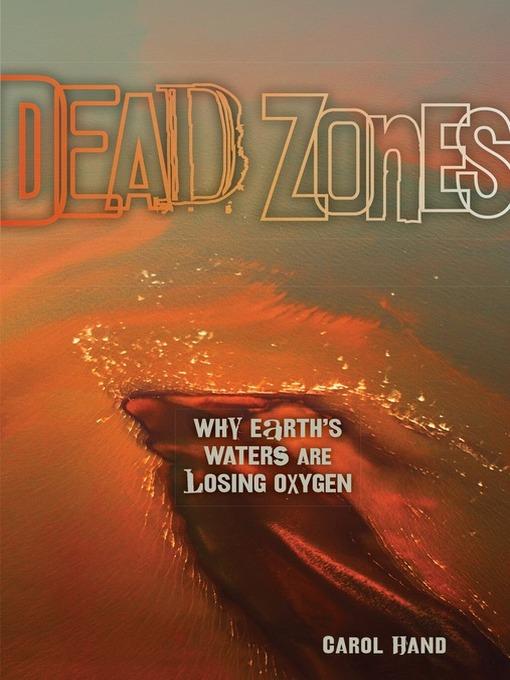
Dead Zones
Why Earth's Waters Are Losing Oxygen
فرمت کتاب
ebook
تاریخ انتشار
2016
Lexile Score
1230
Reading Level
7
ATOS
8.2
Interest Level
9-12(UG)
نویسنده
Carol Handشابک
9781467795753
کتاب های مرتبط
- اطلاعات
- نقد و بررسی
- دیدگاه کاربران
نقد و بررسی

December 1, 2015
Gr 6-8-"When healthy, the Gulf floor teems with many kinds of life, but in a dead zone, it is covered with grayish-black, foul-smelling goo." Highlighting one of the more insidious by-products of environmental pollution, Hand explains how fertilizer runoff can result in algal blooms far downstream that leave huge areas of fresh or salt water so hypoxic-or low in oxygen-that only anaerobic bacteria can survive. Though noting that the Baltic contains seven of the world's 10 largest "dead zones," she focuses mainly on the Gulf of Mexico, where problems caused by such runoff (exacerbated both by local oil spills and by federal programs that encourage Midwestern farmers to grow more corn to convert to ethanol) have sharply affected the fishing and shrimp industries. While the author examines some successful reclamation efforts-notably Boston Harbor and on a larger scale the Black Sea-she doesn't point to simple or easy remedies for this growing blight, either. The cramped photos and maps, along with the narrative's tiny type size, give this study a utilitarian look, but the book covers a worrisome topic in more detail than readers will find elsewhere and also offers generous quantities of print and web resources for further research. VERDICT A significant overview for serious eco-activists or any students interested in our planet's oceans and waterways.-John Peters, Children's Literature Consultant, New York City
Copyright 2015 School Library Journal, LLC Used with permission.

November 1, 2015
An experienced science writer explains the growing phenomenon of dead zones in the world's waters, describing their effects, their likely causes, and efforts to reduce their spread. Hand focuses on the Mississippi-Atchafalaya River Basin and the Gulf of Mexico, but she also touches on the Chesapeake Bay, the Great Lakes, and other areas around the world. She selects relevant information and organizes her material clearly, introducing the problem with some personal stories and including quotations from scientists throughout. In straightforward expository prose, she explains why oxygen is necessary in water and connects its disappearance to the increased cultivation of corn and the overuse of nitrogen fertilizers. She mentions other causes as well, including natural ones, oil spills, and global warming. In a chapter called "Success and Failure" she describes efforts at decreasing nutrient runoff and restoring wetlands before offering some hypotheses about why these efforts have not been as successful as people had hoped. Her language is often technical but appropriate to the subject. Photographs are well-captioned, but these explanations are made less legible by the design decision to print some of them directly on the image and the rest in a tiny red font. Deeply depressing and not for casual readers, but older students will find this an informative introduction to a serious environmental issue. (Nonfiction. 12-16)
COPYRIGHT(2015) Kirkus Reviews, ALL RIGHTS RESERVED.

December 1, 2015
Grades 7-10 Emphasizing the interconnectedness of global ecosystems, Hand dives into the growing problem of dead zones: vast regions of earth's oceans that suffer from decreased oxygen levels, which devastate marine plant and animal populations. She clearly explains how dead zones arisefertilizer washes into the ocean, propagating algal blooms, which overwhelm the ecosystem with decaying plant matter and bacteria, which in turn consume the water's available oxygenbefore getting into the causes of the problem. Large-scale agriculture, climate change, and increased levels of carbon dioxide in the atmosphere are all major culprits. Occasionally Hand's use of statistics overshadows her salient points, but her discussion of both the effects of dead zones and the counterintuitive efforts of government and conservation organizations effectively communicates how complicated and wide-ranging an issue this is. Maps and diagrams helpfully illustrate some of the science, and the straightforward, unsparing text will encourage students to think critically about their own choices, even if they live far away from the ocean. An illuminating introduction to a complicated, dire ecological problem that deserves more attention.(Reprinted with permission of Booklist, copyright 2015, American Library Association.)

























دیدگاه کاربران